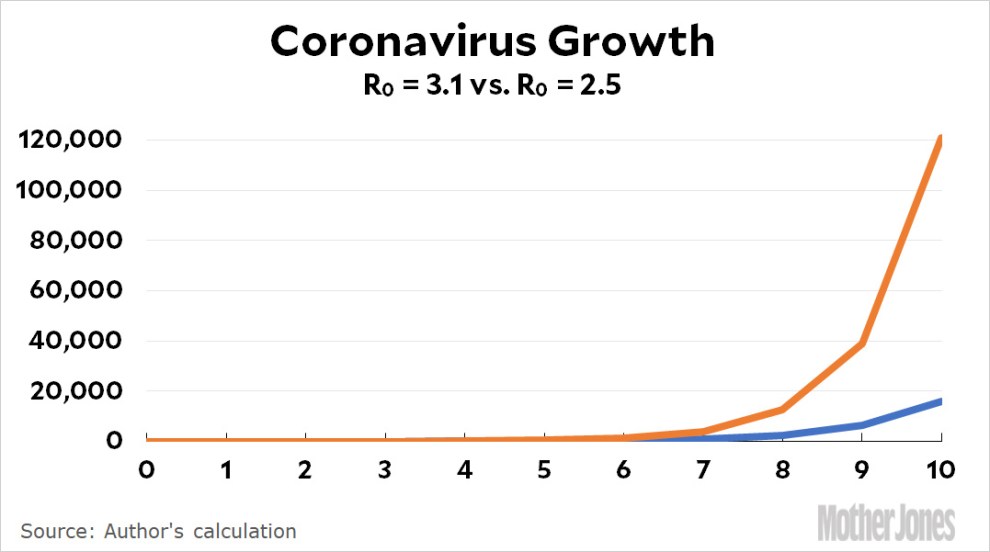
From the department of buried leads:
New data from the rest of Europe suggests that the outbreak is running faster than expected, said [Neil] Ferguson. As a result, epidemiologists have revised their estimate of the reproduction number (R0) of the virus. This measure of how many other people a carrier usually infects is now believed to be just over three, he said, up from 2.5. “That adds more evidence to support the more intensive social distancing measures,” he said.
Neil Ferguson is the guy in charge of the Imperial College study that predicted 2 million coronavirus deaths in the US and 500,000 in Britain if no control measures were taken. He now believes that Britain will keep its death toll under 20,000 due to the strong isolation and social distancing measures being taken.
Which is great! At the same time, estimating that R0 has increased from 2.5 to 3.1 is . . . very, very bad. It means that on average, every infected person infects three other people, not 2.5 other people—which makes the spread of the virus much wider and faster. Without any control measures, for example, it means that after ten generations a single person will be responsible for 120,000 infections instead of 15,000 infections.
In other words, control measures are even more important than we thought. This is really, really no time for Donald Trump to be screwing around with this stuff.















